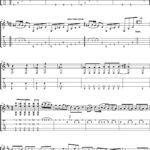Guitarists are intimately familiar with the sounds their rigs make, from soaring solos to subtle弦音. But there’s one sound that’s less desirable and often overlooked: the pop noise when you unplug your guitar cable from your amplifier. While some might consider it a minor annoyance, understanding this phenomenon, especially concerning different types of amplifiers, is crucial for every player, particularly in live performance settings.
The discussion around this “pop” often surfaces in online forums, with players comparing experiences across various gear. One user pointed out a noticeable difference between tube amps and digital modeling amps like the Kemper Profiler. They observed that while unplugging a guitar cable from a Fender Deluxe Reverb at high volume resulted in a relatively soft pop, doing the same with a Kemper Profiler into a powered speaker produced a significantly louder and potentially problematic noise.
This isn’t just about volume at home. Imagine this amplified through a PA system in a live venue. That “soft pop” can become a disruptive bang, potentially damaging speakers and certainly jarring for the audience. The core issue isn’t whether a pop exists—it’s the signal-to-pop-noise ratio. The user rightly points out that this ratio seems worse in some digital amps compared to well-maintained tube amps. This observation isn’t about declaring one amp “bad” and another “good,” but about understanding the nuances of our equipment.
Why does this matter? For studio players who meticulously craft tones, or live performers who rely on seamless transitions, an unexpected loud pop is more than just an annoyance. It can be a serious issue. While unplugging a cable directly from a miked tube amp might be a calculated risk some musicians take, the same action with certain digital setups could lead to an unwanted sonic explosion through the PA.
Instead of dismissing these observations, it’s beneficial for the guitar community to investigate and compare these experiences. Understanding the factors contributing to this pop—whether it’s grounding differences, input impedance, or circuit design—can lead to better practices and potentially even inspire improvements in amplifier technology. Perhaps a more robust input design on digital amplifiers could minimize this issue, benefiting all guitarists who value a clean and professional sound, even when disconnecting their Guitar Amplifier Cable.
Ultimately, being aware of this potential pop noise and how it varies across different amplifier types is part of being an informed and prepared guitarist. It encourages us to handle our gear with care and consider the implications of even seemingly minor actions like unplugging a guitar cable.

